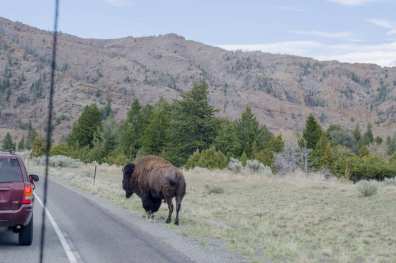
Cody, Wyoming is a town I’ve always wanted to visit, but the chance just hadn’t come up. I had various reasons for going there; the first is the Buffalo Bill Center of the West with its museums and art galleries.

I finally got to make the trip and nothing about it was disappointing. It was in early spring, and it was still cold with fresh snow up in the mountains, but the town itself was shaking off the winter and warming up nicely. Cody is a small town, with about ten thousand citizens, and far away from interstate highways.

Small in population maybe, but there is nothing small or small-town about The Buffalo Bill Center. It contains 5 separate museums that cover the west. These museums explore the natural and human history, as well as the fascinating geology of the area. They tell the stories of the plains Indians and the Euro-American explorers and settlers of the 1800s. There’s an exhaustive firearms museum and some tremendous examples of the artwork of the West. Buffalo Bill Cody himself would be very proud of the Center.

Buffalo Bill helped found the town name for him, back in 1896. Cody lies in a valley, at the end of a gorge carved through the Absaroka mountains by the Shoshone River. The road to Yellowstone follows that river up into the sky, past grazing herds of elk and wandering buffalo, between spectacular mountain ranges that are home to mountain goats and Bighorn sheep. Steep and wild, those peaks look impossibly rugged.

As you approach Yellowstone Lake you become uncomfortably aware you’re on top of a smoldering volcano. The caldera is very active, with the occasional whiff of steamy sulfurous gases and boiling mud pots, and of course the famous geysers. It’s no wonder the natives and trappers who explored this land were enthralled with it.
It’s easy to see why Yellowstone became our first National Park.
I’m Len Wilcox and that’s the Western View from AgNet West and Citrus Industry Magazine. Visit us on the web at www.citrusindustry.net.

About the Author
Len Wilcox
Len Wilcox is a retired scientist who also ran a newspaper and has written for agricultural publications since the 1980s. He was a regular contributor to California Farmer Magazine. His commentary “The Western View” is a regular feature on Farm City Newsday and AgNet West.










